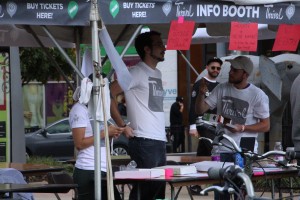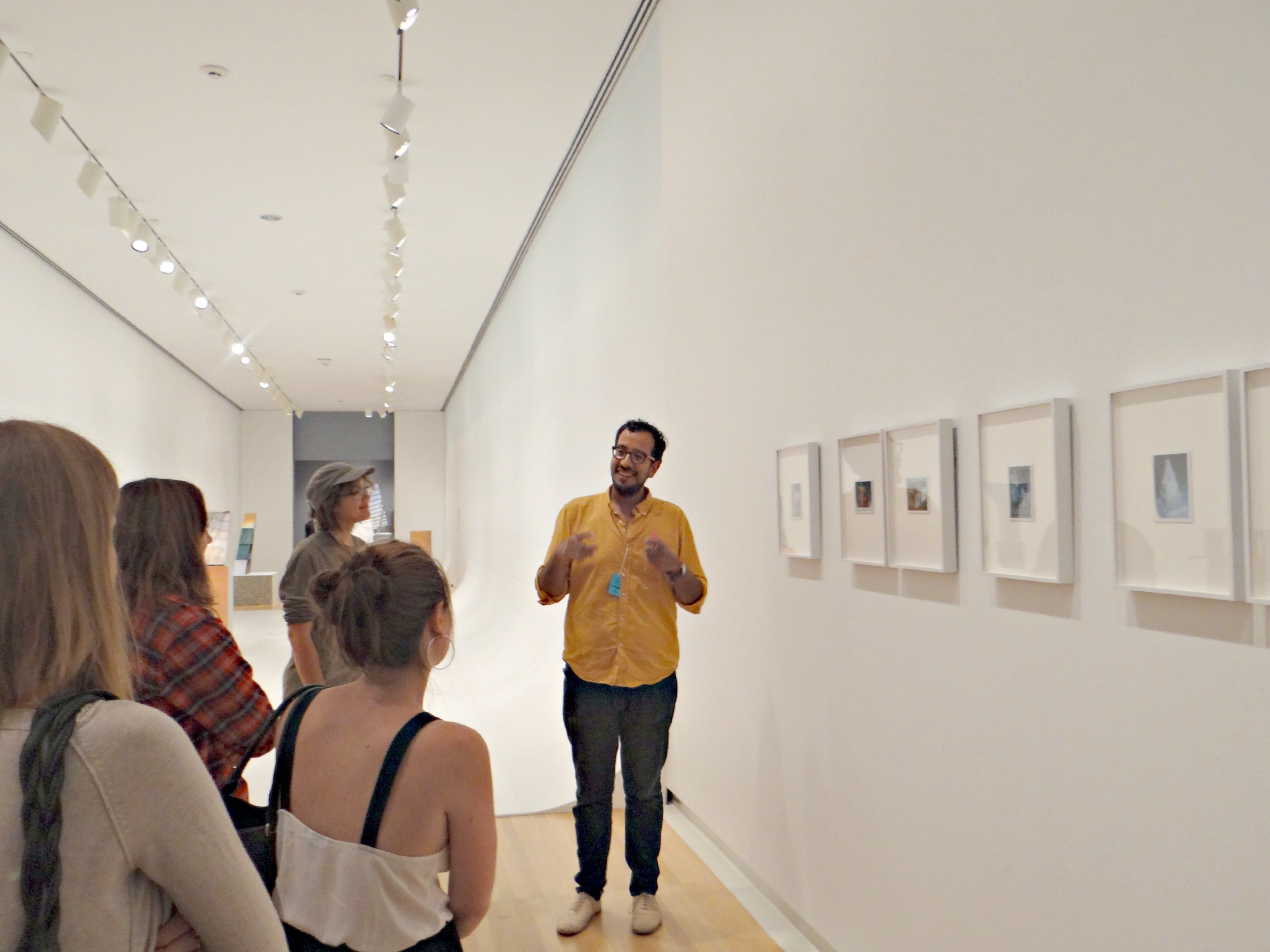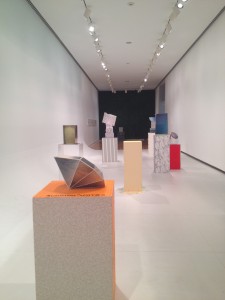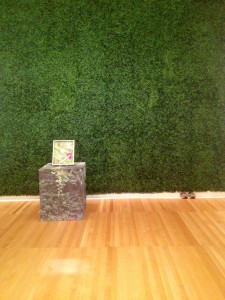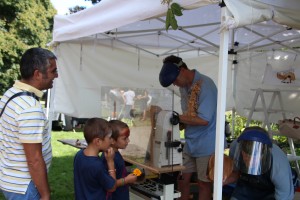In keeping with the Halloween theme that takes hold of Chatham’s campus every October, the Chatham University Drama Club decided to host a one-night-only shadow cast performance of Jim Sharman’s 1975 cult classic: “The Rocky Horror Picture.”
The event, which took place in the Eddy Theatre on Friday, October 17, was a success, with more than half of the theatre filled with Chatham students and non-Chatham students alike.
Upon entering the theatre, students were given programs and encouraged to make a donation. Additionally the Drama Club sold pre-made prop bags filled with all of the props traditionally used by audiences to participate during screenings of the show. These included bubbles to blow during the wedding scene, glow sticks, playing cards, streamers, and toilet paper, all of which coincided with lines within the show.
All proceeds from the show went to the Dreams of Hope Organization as Kimberly Webb, director of the show, explained in a short speech before the show began. According to Webb, “It is a queer youth oriented theatre group. They do really great work, providing summer camps, arts in schools, and of course putting on productions–and they do it with a queer orientation.”
In regards to her participation in the show, Webb said that as soon as the Drama Club voted to do “The Rocky Horror Picture Show” shadow cast she, “applied immediately to direct it, because it’s such a fun show, and I had a really good time working on the other
‘Rocky’ two years ago.”
As soon as the film began playing on the big screen, and the cast took their places on stage the audience began cheering, clearly aware of what was to come next.
Given that the show has such a colorful history and large fan-base, most of the audience had seen it before, which was evident through their enthusiastic participation. Not only did people use the props, but many also shouted retorts to nearly every line of the film. Some individuals even dressed up as characters from the show–which is another common practice at screenings of “The Rocky Horror Picture Show.”
“I did not expect so many people to yell a–hole at me every time I introduced myself,” said Samantha Bigley, who played Brad Majors, the male lead in the show. “It’s a very high-energy show and having an audience there to egg us on was awesome.”
Webb expressed a similar opinion, saying, “I love the audience participation element of the show, and how into it people get.”
According to Bigley, “Preparing for the show was very weird for me. I’m used to rehearsing for regular stage plays where you learn your lines and block every single movement for each character. Blocking to perform in front of a movie was much different.”
According to her, “The toughest part of rehearsing for the show was probably learning to time what we were doing on stage so that it would line up with what was happening in the movie. We couldn’t look at the screen at any point, so we had to learn the audible cues for when we should move on stage.”
The other difficult part of the show, according to Bigley, was a costume change in which they, “had less than three minutes to change into fishnets, garter belts, corsets, and high heels.”
“I am now an expert at the quick change,” said Bigley.
All told, the show was a success, and the cast, crew, and director were pleased with the result. There are hopes of performing it again next year or even making it an annual event.
According to Webb, “This cast and crew was amazing to work with, and they did such a good job. It was everything I had hoped it would be.”






